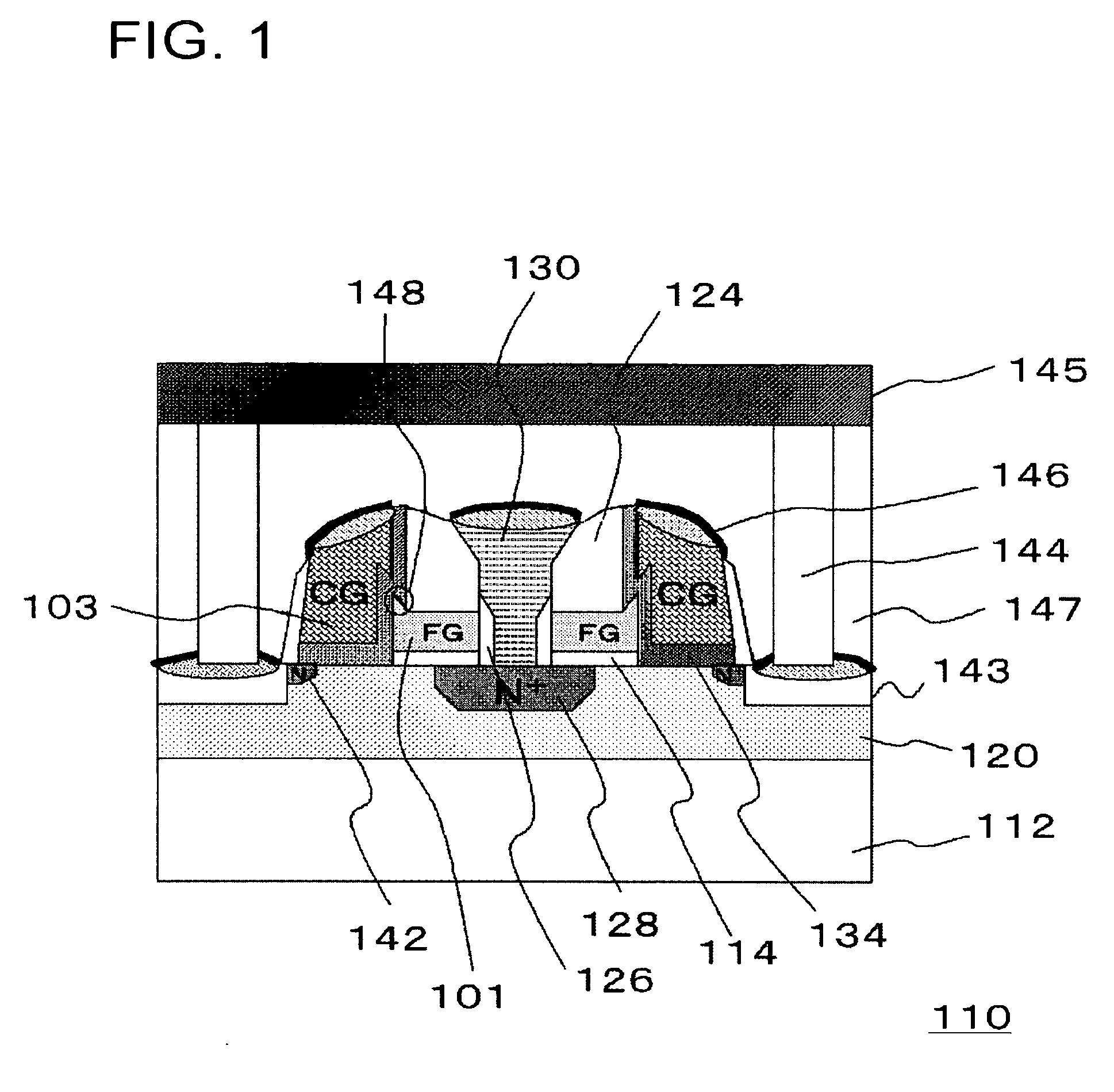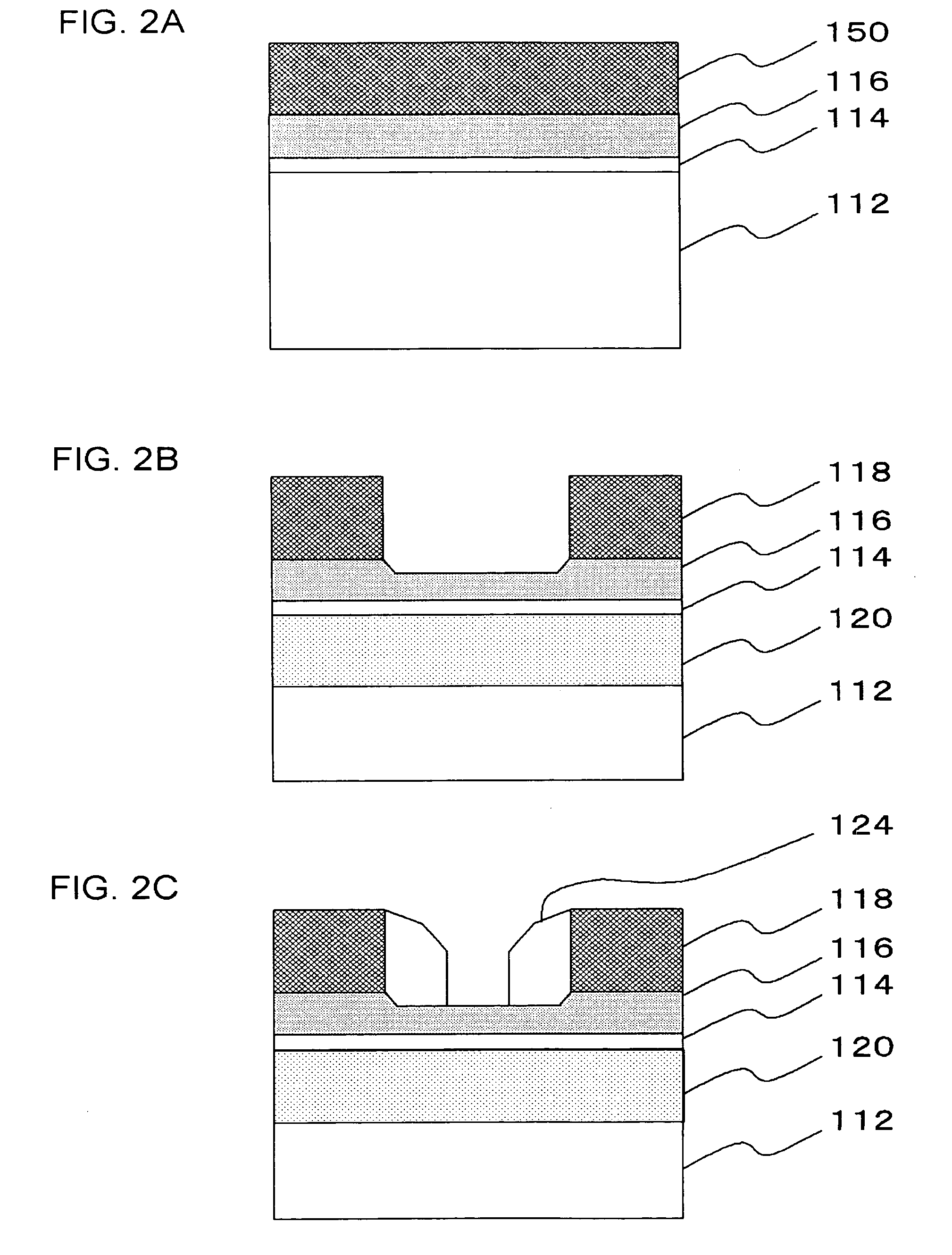Method of fabricating a non-volatile memory element
- Summary
- Abstract
- Description
- Claims
- Application Information
AI Technical Summary
Benefits of technology
Problems solved by technology
Method used
Image
Examples
first embodiment
[0068] As has been described in the above, the interpoly insulating film 134 is formed after the floating gate 101 is processed. In this embodiment, the interpoly insulating film 134 is formed by exposing, after formation of the HTO film (Step 201), the HTO film simultaneously to a nitrogen-containing gas and oxygen, to thereby introduce nitrogen into the HTO film and thicken it (Step 202).
[0069] The interpoly insulating film 134 is formed by the CVD process. More specifically, a Si-containing gas and an oxygen-containing gas are used as film-forming gases in an LP furnace (reduced-pressure CVD furnace), and the HTO (high temperature oxide) film is grown under a reduced pressure of 150 Pa or lower, and at a temperature of 750° C. or above, and more preferably approximately 800° C. to 850° C. The thickness of the HTO film may be of any desired value, typically in the range from 8 nm to 20 nm, both ends inclusive. SiH4 or SiHCl2 is typically used as the Si-containing gas. N2O is typi...
second embodiment
[0088] Of the process steps of fabricating the non-volatile memory element 110 shown in FIG. 1, the annealing for modifying the HTO film which serves as the interpoly insulating film 134 may be carried out in an atmosphere further containing N2 gas, in addition to NO or N2O gas in combination with O2 gas.
[0089] In this embodiment, N2 is added for dilution in order to adjust the rate of oxidation. This makes it possible to suppress the amount of increase in the thickness of the HTO film, while keeping the modification effect by the annealing. This is because the N2 dilution does not largely alter the amount of introduction of nitrogen ascribable to NO gas, but the oxidation is suppressed by the dilution. According to the method of modification in this embodiment, it is therefore made possible to independently and arbitrarily control the amount of thickening of the HTO film due to oxidation. The roughness of the interface of the interpoly insulating film 134 can therefore be decrease...
third embodiment
[0090]FIG. 6 is a drawing showing another embodiment of the non-volatile memory element 110. In FIG. 6, the floating gate FG 101 is provided on the silicon substrate 112 while placing the silicon oxide film 114 in between, and a source / drain region 160 is provided adjacent to the floating gate FG 101. On the floating gate FG 101, the control gate CG 103 is provided while placing the interpoly insulating film 134 in between.
[0091] The methods of growing the interpoly insulating film 134 explained in the first embodiment and the second embodiment are adoptable also to formation of the interpoly insulating film 134 in the non-volatile memory element 110 having the control gate CG 103 formed on the floating gate FG 101 as shown in FIG. 6.
[0092] The present invention has been described in the above referring to the embodiments, wherein the embodiments are merely of exemplary purposes, so that it will be readily understood by those skilled in the art that various modifications are allow...
PUM
 Login to View More
Login to View More Abstract
Description
Claims
Application Information
 Login to View More
Login to View More - R&D
- Intellectual Property
- Life Sciences
- Materials
- Tech Scout
- Unparalleled Data Quality
- Higher Quality Content
- 60% Fewer Hallucinations
Browse by: Latest US Patents, China's latest patents, Technical Efficacy Thesaurus, Application Domain, Technology Topic, Popular Technical Reports.
© 2025 PatSnap. All rights reserved.Legal|Privacy policy|Modern Slavery Act Transparency Statement|Sitemap|About US| Contact US: help@patsnap.com



